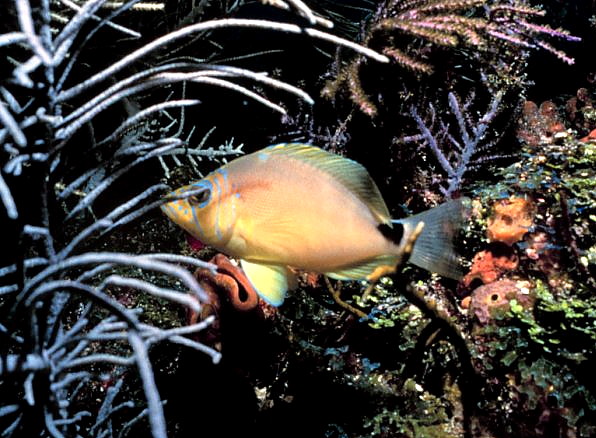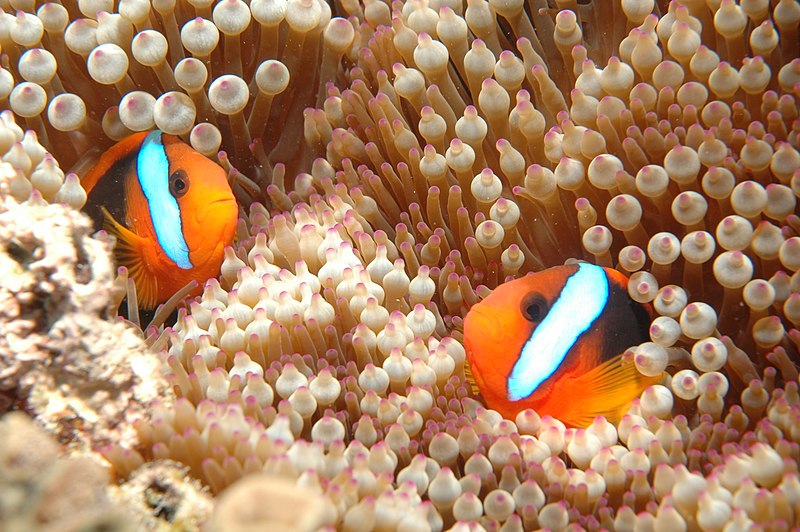 In our modern society, boys and girls are raised to be men and women and play equal roles in everything from defense to child-rearing. The animals kingdom isn’t as simple. With some animals, males and females have specific roles to play in their community and are nurtured for their positions. Many of the fish we keep in our aquariums have very different strategies. Weighing the balance between reproducing and surviving plays a huge part in their life history, right down to the most fundamental concepts of gender, size, and appearance.
In our modern society, boys and girls are raised to be men and women and play equal roles in everything from defense to child-rearing. The animals kingdom isn’t as simple. With some animals, males and females have specific roles to play in their community and are nurtured for their positions. Many of the fish we keep in our aquariums have very different strategies. Weighing the balance between reproducing and surviving plays a huge part in their life history, right down to the most fundamental concepts of gender, size, and appearance.
A “hermaphrodite” is an organism that has both male and female reproductive abilities. While this is usually very rare in animals like birds and mammals, it is extremely common in plants and some invertebrates. Biologically speaking, if the chances of a plant or animal running across another of its kind are low, the chances of it finding another with the opposite sex as itself that it can reproduce with are even lower. Therefore, not having an assigned gender or being able to act as both genders can be beneficial. Many plants, animals and invertebrates use this strategy, but we’ll focus on fish in this blog.
Fish like wrasses, parrotfish, anthias and clownfish use “sequential hermaphroditism”, meaning that instead of having both sets of reproductive organs, the fish starts out as one gender and at some point is triggered to switch to another. There are two types of sequential hermaphroditism that we can witness in the aquarium trade: protogyny and protandry.
Protogyny
 Protogynous fish include some angels, groupers, anthias, wrasses and parrotfish. These animals start their lives as females and may eventually become male. These are the fish that are typically kept in “harems” – one male with several females. In these fish, the benefit to the group as a whole is protection and security. A larger dominant male can control a larger group of females, protect the group from “invaders” and can pass along its genes by mating with the females in its harem. If the dominant male is removed – either physically removed or if it dies for some reason – the largest, most dominant female in the group is triggered to become male and take over control of the harem. Depending on the species, this can happen in as little as a few days so no valuable spawning time is lost. Males and females can look identical in this strategy or they can have drastically different appearances in color or body shape.
Protogynous fish include some angels, groupers, anthias, wrasses and parrotfish. These animals start their lives as females and may eventually become male. These are the fish that are typically kept in “harems” – one male with several females. In these fish, the benefit to the group as a whole is protection and security. A larger dominant male can control a larger group of females, protect the group from “invaders” and can pass along its genes by mating with the females in its harem. If the dominant male is removed – either physically removed or if it dies for some reason – the largest, most dominant female in the group is triggered to become male and take over control of the harem. Depending on the species, this can happen in as little as a few days so no valuable spawning time is lost. Males and females can look identical in this strategy or they can have drastically different appearances in color or body shape.
Some protogynous wrasses have a unique strategy that is certainly the exception to this rule (and prove that soap operas were not, in fact, human inventions!). This is where we encounter “initial phase” and “terminal phase” males. Occasionally, male fish are born rather than females that have become dominant males. These “initial phase” males are often closer in appearance to females than males and live within the harem with the females. While the dominant male is busy protecting the harem, the initial phase male (also appropriately called “sneaker male” by some) can spawn with the females before the dominant male is able to. Some of these initial phase males may go on to replace a deposed dominant male while others can become victim to a dominant male who catches the interloper.
Protandry
Protandry is generally limited to clownfish and is the opposite of protogyny. Protandrous fish start out as males and eventually become female. Clownfish in the wild live as groups around a host anemone for protection and the eggs are laid in a nest rather than let loose into the water column. It would benefit these fish more to have more protectors for their more limited territory and for a female to produce more eggs rather than for a male to fertilize many females. A single anemone may house several fish but only one pair will reproduce. Though all clownfish are born with both male and female reproductive traits, the male tissues mature first. These tissues degrade in the largest fish in the group and the ovaries will mature since the largest fish is capable of producing the most eggs. The next largest male will spawn with this female while the rest of the fish in the group will be non-reproductive and a pecking order is established down from the female to the dominant male and subdominant juveniles. As in protogyny, if the female is removed from the group, the dominant male begins the transition from male to female and the next-dominant male becomes the breeding male in the “harem”.
 In both strategies, the fish are actually born with some form of male and female reproductive tissues. One type – either the male or female tissues – will mature before the other. When the fish is triggered to “switch” genders, the immature tissues will mature quickly as the tissues that had been mature will degenerate. In both strategies, the change from male to female or from female to male is not reversible. The change in gender is triggered by a change in social structure. If a fish was dominant, it would have no biological reason to give up its control. As brutal as the expression may be here, the phrase “Over my dead body” comes to mind. Even if you aren’t planning to breed your aquarium fish, it can be important to know their social structure and how it affects their aggression, color, size and compatibility.
In both strategies, the fish are actually born with some form of male and female reproductive tissues. One type – either the male or female tissues – will mature before the other. When the fish is triggered to “switch” genders, the immature tissues will mature quickly as the tissues that had been mature will degenerate. In both strategies, the change from male to female or from female to male is not reversible. The change in gender is triggered by a change in social structure. If a fish was dominant, it would have no biological reason to give up its control. As brutal as the expression may be here, the phrase “Over my dead body” comes to mind. Even if you aren’t planning to breed your aquarium fish, it can be important to know their social structure and how it affects their aggression, color, size and compatibility.
Thanks for reading,
Eileen
Clownfish in Anemone image referenced from wikipedia and originally posted by Leonard Low
 That Fish Blog – Aquarium Advice and Information
That Fish Blog – Aquarium Advice and Information

Thanks for such informative post. i was looking for it from last 2-3 months. You make my task easy, I’m so happy to have your blog. Thanks a lot, keep on like that. From now I’m a regular user of your blog.